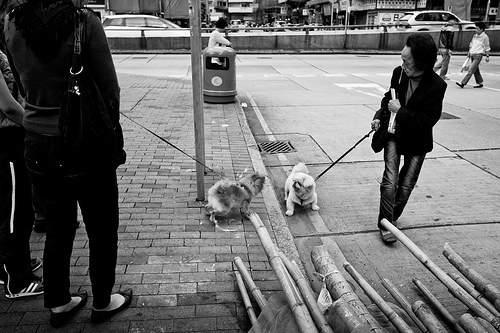Connie Willis knows her stuff. She's won 11 Hugo Awards, 7 Nebula Awards and been inducted into the Science Fiction Museum and Science Fiction Hall of Fame.
When I read the article Connie Willis on Dialogue it was no surprise that Ms. Willis gave great advise. Here are the highlights:
1. Dialogue & Conversation
Real dialogue would be very difficult to read. I ride the buss a lot and half the time I have no idea what people are talking about. It's a game I play to try and find out.
A: "Did you remember?"
B: "What? Oh. Right. Yea. Before I left."
A: "How did she take it?"
B: (Shrug) "Okay I guess. Oh, don't forget dinner."
A: "Mary?"
B: (Nods)
For all I know, Mary's the main course! (Or perhaps I'm thinking that because I just wrote about what makes a story scary.) The author writes:
[W]ritten dialogue tries to sound like speech, but it’s more coherent. It’s a suggestion of how speech sounds rather than the real, often incomprehensible, things we say to each other.
2. Better than real life
Good dialogue is idealized speech. Our characters say the things we wish we would have said in real life. They get to be witty and effervescent.
3. Skip The Boring Bits
Don't bother having your characters say hello. Skip to the important bits.
Writers often start dialogue with meaningless greetings or idle, warm-up chit chat. Part of “distilling” dialogue is starting with the important, plot-relevant speech.
4. Dialogue First, Description Second
Let's say two of your characters are having a conversation. Write it out. Everything. Don't pause to describe the setting, what the characters are thinking, any actions that are occurring, and so on.
That's the first step. The next step is to cut half of it out. Snip, snip. You want to distill the conversation down to its essentials.
5. No Long Speeches
Period. They are dry, and dull and boring.
6. Dialogue With Action
Don't just have your characters standing around talking, have them doing something. Think of the last movie you watched. Actors rarely just stand still, look at each other and talk. They're walking, fighting, making love, whatever, but--generally--they don't just stand around and talk.
7. Using Dialogue To Forshadow
I read somewhere that you want to implant a question in your readers mind with the first sentence of your story. Changes, by Jim Butcher, is a great example:
I answered the phone, and Susan Rodriguez said, "They've taken our daughter".The question: What daughter? That was how Harry--as well as the reader--learnt he had a child. Excellent hook. (Also, who took the daughter and why did they take her and where is she. That was a magnificent opening line.)
Good dialogue doesn’t ... just give information. It can hint of information the reader will want to know, particularly at the beginning of the story .... The characters are talking about something that is clearly meaningful for them, but they aren’t aware of the unseen eavesdropper, the reader, so the conversation can raise a question .... They’ll keep reading to find out what the characters in the story were talking about.
8. Make Your Characters Angry
Put your characters in a jar and shake it. Make them angry, make them fight and say things, deep cutting things, things they mean--or not. Often we get a peek into what a person is really like when they're angry, what they're prepared to do.
9. Be Subtle/Show Don't Tell
How many times has a guy walked up to the girl he loves and said, "I love you"? Probably not often. He's scared that she won't feel the same way about him and, besides, most of the guys I know would rather go through dental surgery without anesthetic than talk about their feelings.
A lot of times we tell each other things without saying them. Thinks like: "I love you. I miss you." We communicate it in our tone of voice, in the things we do, or don't do. In pauses and blushes, in stammering and in smiles.
Robert Sawyer gave an excellent workshop on this subject. My notes are here: Robert J. Sawyer: Showing Not Telling.
10. Dialogue: Character Reaction
In life we often gauge the seriousness, or importance, of something that was said by the reactions of people around us. It's the same in dialogue. Have your supporting characters show the importance of what's being said.
Important dialogue is hardly ever important to just the person who is saying it. We understand the importance of what people are saying by how other characters respond to it.
11. Banter Is The Highest Form of Dialogue
This is how the dictionary defines banter: The playful and friendly exchange of teasing remarks. Whenever I think of banter I think of the opening scenes of Pulp Fiction.
Banter is two characters on the top of their games, both saying exactly the right, clever, witty, penetrating comment at exactly the right time. Banter is like a long rally in an epic tennis match. The characters are smarter, snappier and funnier than real dialogue.I'd encourage you all to read the article Connie Willis on Dialogue for yourself, there was a lot I didn't cover. Happy dialoguing! :)
Other articles you might like:
- Writing Horror: What Makes A Story Scary?
- Self Publishing on Amazon: Kindle Direct Publishing
- 19 Ways To Grow Your Twitter Following
Photo credit: "Heated Argument /口角" by Ding Yuin Shan 丁雲山 under Creative Commons Attribution 2.0.


